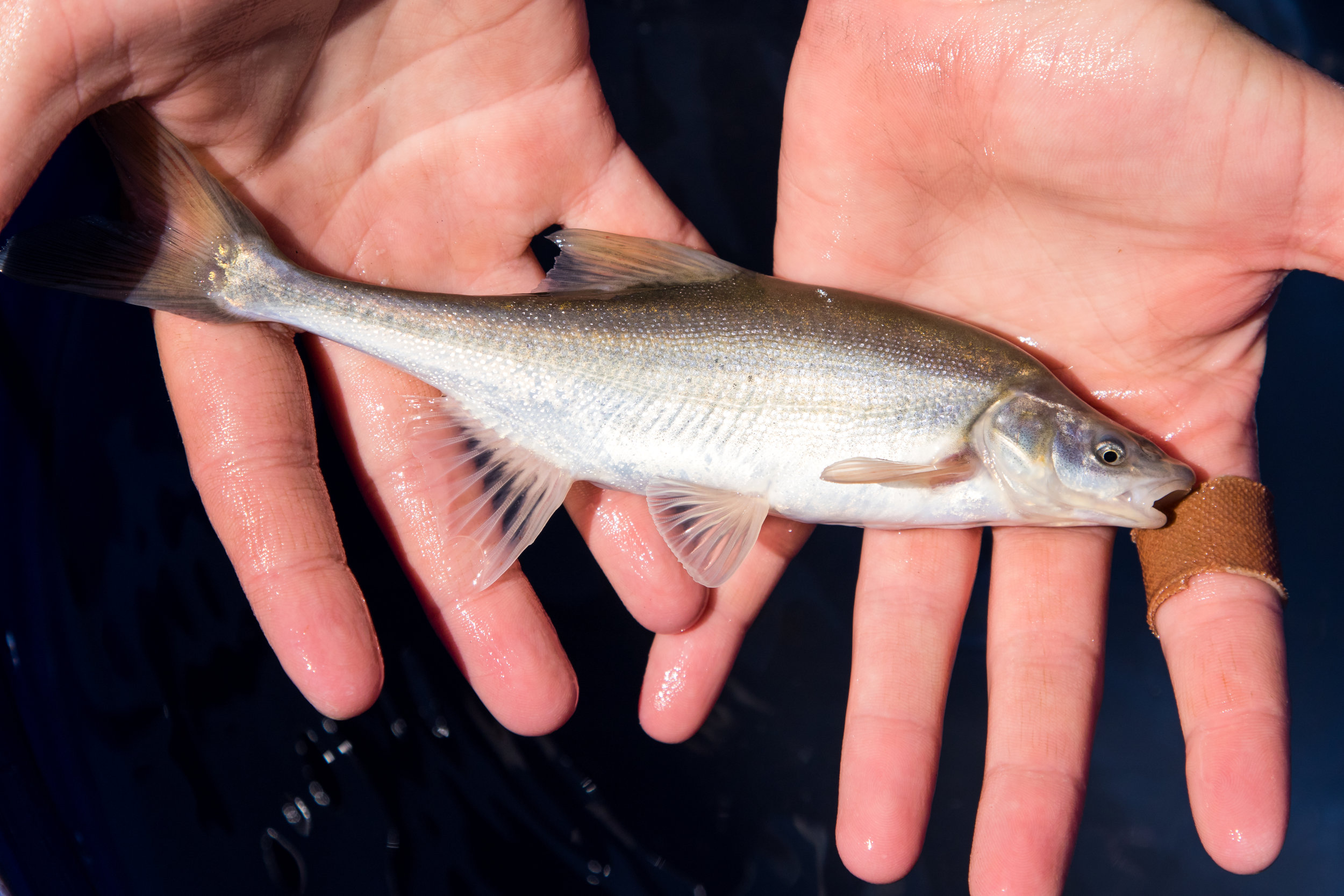There are three types of trips that run through the Grand Canyon: commercial, private, and science. Commercial trips are those that tourists pay thousands of dollars for, and was what I did last year with Arizona Raft Adventures. Private trips require a permit from the National Park Service's lottery system, anyone can go. Science trips are typically funded by NPS, the Department of the Interior, or Grand Canyon Monitoring and Research Center (GCMRS). The Arizona Game and Fish Department (AGFD) does three trips per year to study the fish populations—all funded by Glen Canyon Adaptive Management Program.
This was a science trip. There were four boatmen, three scientists, two other volunteers and myself.
AGFD was collecting data to examine the trends of the native and nonnative fish populations in the Grand Canyon section on the Colorado River. On the second half of the trip, we mostly caught flannelmouth suckers and humpback chub, with a few speckled dace and bluehead suckers, which are all native fish species in the Canyon. There are tons of brown and rainbow trout in the upper third of the canyon, which are nonnative fish.
The first two photos above are of a young humpback chub, named for its hump behind its nose. The chub are an endangered species due to habitat destruction from the dams and nonnative predators. They tend to congregate around the turquoise blue waters of the Little Colorado River and Havasu Creek because of the warmer water from these tributaries, but are also spread out in the lower third of the Canyon (3rd photo). Data collection from AGFD's trips have shown that the chub populations in this section of the canyon has rapidly increased due to range expansion that occurred within the last 5 or 10 years; they have been around the Little Colorado and Havasu for as long as scientists have been studying them.
We all worked, there wasn't much time for relaxing. A typical day would look like the following:
We would wake up after sunrise, normally around 7:30 and have some coffee. The head cook, Perkins, and a few other helpers would start breakfast while everyone else would pack up their cots and dry bags. We'd eat, share a few laughs and load up the boats while jamming to a morning run through Perkin's only playlist—which consisted mostly of Creedence Clearwater Revival.
Then a boatman, scientist and volunteer would head out on each of the two sport boats to retrieve the hoop nets that we set out the night before. The retrieval and data processing would take between 1.5-3 hours, depending on how many fish we caught. After, we'd all meet at camp and start heading downstream.
We would drive the boats for 30 minutes or 4 hours, which depended on where our fishing sites were, and thus how many miles we had to cover each day. We'd either eat lunch on the boats, pack a lunch, or stop somewhere to stretch our legs and cool off in the shade. Then we'd find a camp for the night, unpack the boats and set up the kitchen.
A boatman, scientist and volunteer would head out on the sport boats to set the hoop nets and reflective batons to mark electrofishing sites (last photo) and then we'd all return to camp for dinner and some free time. The scientists would go out to electrofish once it got dark, and the rest of us would hang out in the motor wells of the rafts and chat with the boatmen.
Whenever we'd pass the other sport boat when pulling hoop nets in the morning, and if we had caught any chub, we would shout "CHUBBBB" across the river to the other boat and fishermen. Scientists tend to get pretty stoked about endangered fish.



